 |
 |
 |
 |
 |
 |
ipemanoticias@gmail.com
(55)(12) 3848 2682
Contact us from:
8 - 12 e 14 -17, Monday to Friday
Please book an appointment before coming.
We are located in Ubatuba, north coast of São Paulo, Brasil.
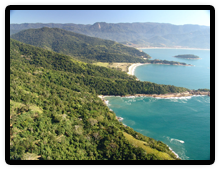
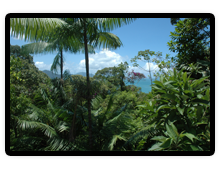
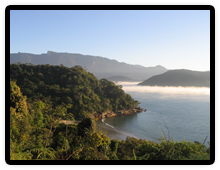
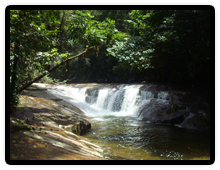
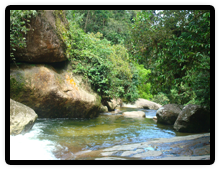
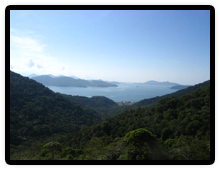
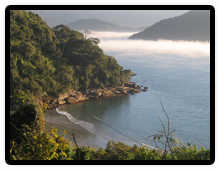
The Atlantic Forest of tropical South America boasts 20,000 plant species, 40 percent of which are endemic. Yet, less than 10 percent of the forest remains. More than two dozen Critically Endangered vertebrate species are clinging to survival in the region, including three species of lion tamarins and six bird species that are restricted to the small patch of forest near the Murici Ecological Station in northeastern Brazil. With almost 950 kinds of birds occurring in this hotspot, there are many unique species including the red-billed curassow, the Brazilian merganser, and numerous threatened parrot species.
The Atlantic Forest or Mata Atlântica stretches along Brazil's Atlantic coast, from the northern state of Rio Grande do Norte south to Rio Grande do Sul. It extends inland to eastern Paraguay and the province of Misiones in northeastern Argentina, and narrowly along the coast into Uruguay. Also included in this hotspot is the offshore archipelago of Fernando de Noronha and several other islands off the Brazilian coast. Long isolated from other major rainforest blocks in South America, the Atlantic Forest has an extremely diverse and unique mix of vegetation and forest types. The two main ecoregions in the hotspot are the coastal Atlantic forest, the narrow strip of
about 50-100 kilometers along the coast which covers
about 20 percent of the region. The second main
ecoregion, the interior Atlantic Forest, stretches
across the foothills of the Serra do Mar into
southern Brazil, Paraguay and Argentina. These
forests extend as far as 500-600 kilometers inland
and range as high as 2,000 meters above sea level.
Altitude determines at least three vegetation types
in the Atlantic Forest: the lowland forest of the
coastal plain, montane forests, and the high-altitude
grassland or campo rupestre.
The Atlantic Forest South-East Reserves, in the
states of Paraná and São Paulo, contain some
of the best and most extensive examples of
Atlantic forest in Brazil. The 25 protected
areas that make up the site (some
470,000 ha in total) display the
biological wealth and evolutionary
history of the last remaining Atlantic
forests. From mountains covered by
dense forests, down to wetlands,
coastal islands with isolated mountains
and dunes, the area comprises a rich
natural environment of great
scenic beauty.
There are two groups of Amerindian cultures in the Atlantic Forest: the Tupi, who live along the Brazilian coast and in the northern highlands, and the Guaraní, who live in the southern lowlands, in Brazil, Paraguay and Argentina. About 134,000 Tupi and Guaraní people live in the Atlantic Forest region, including all three countries, today.
These societies have lived in the area for hundreds of years but the destruction of the Atlantic Forest in Brazil began in earnest in the 16th century, when Portuguese, Spanish and French colonial settlements were established along the Atlantic coast. Forests inland were cleared for timber, which was then traded for cattle to stock the ranches that were expanding along the major rivers. In the northeast, sugar plantations were established along the coast, leading to the near total destruction of the coastal forests.
By the early 19th century, forests in Rio de Janeiro, Minas Gerais and São Paulo were being cleared for timber, cattle-ranches and, most especially, coffee plantations. The rapid of growth of the population in the region led to urbanization, an increased demand for charcoal and firewood, and further forest clearing. Rapid economic development in Brazil during the “economic miracle” from 1960 to 1984 brought heavy industry to southeast Brazil, adding insult to injury with severe air and water pollution and its damaging effects on biodiversity and forests around the cities.
The southeast is today the industrial center of Brazil, home to approximately 70 percent of Brazil’s 176 million people and enormous sprawling cities such as São Paulo, Rio de Janeiro and Belo Horizonte. Brazil is one of the largest wood pulp producers in the world, with much of the country's industrial forestry operations located in the states of Bahia, Minas Gerais and Espírito Santo in the heart of the Atlantic Forest Hotspot. Plantations are typically monospecific stands of eucalyptus (Eucalyptus spp.). Although recent legislation has restricted the clearing of the remaining primary forests for plantations, enforcement is difficult and logging is still an insidious and pervasive activity, gradually destroying the remaining fragments of the forests that once covered the entire region.
The narrow strip of coastal forest in northeastern Brazil has all but gone—only about three percent remains. The best-preserved areas of forest in Brazil survive on the steep slopes of the coastal Serra do Mar mountains in Rio de Janeiro, São Paulo and Paraná.
Argentina’s Misiones province has a greater proportion of its original forest cover remaining (about 45 percent or 10,000 km2). However, is too is rapidly being degraded and fragmented, which has placed the region's biodiversity at risk. Principle activities there include the intensification and expansion of agriculture, including the cultivation of yerba maté (Ilex paraguariensis) and tobacco; logging; clearing for plantation forestry by large pulp and paper operations; and the proliferation of small farms due to the influx of landless peasants from other regions of Argentina, besides Brazil and Paraguay.
Although 13 percent (11,618 km2) of Paraguay's original forest cover still exists, the forests have been intensively clear-cut in recent years. It is being deforested to make way for agricultural development and rural settlements, and its remaining forest patches are highly fragmented.
The end result is that destruction and degradation of the Atlantic Forest over the last 50 years has been at least as severe as that of the previous three centuries. Only about eight percent remains of the unbroken tropical and subtropical forests which formerly covered more than 1,233,875 km2.
Many of the remaining forest fragments in the Atlantic Forest need to be protected immediately in order to prevent species extinctions. About 23,800 km2 of the remaining Atlantic Forest in Brazil is officially under strict protection (including IUCN categories I, II, III), in 224 protected areas—108 national and state parks, 85 federal and state biological reserves and 31 federal and state ecological stations and reserves. The private reserve system in the Brazilian Atlantic Forest is also quite extensive, totaling 443 and covering almost 1,000 km2. In Argentina, 4,598 km2 are under protection in 60 protected areas of various categories, representing about 21 percent of the original Atlantic Forest in Misiones province. There are eight protected areas totalling 1,392 km2 in the Atlantic Forest portion of eastern Paraguay, covering less than two percent of the original extent.
In all, despite the Atlantic Forest’s grim past, the outlook for the future looks bright, thanks to the availability of new conservation instruments, funding mechanisms and a large body of well-trained conservation professionals. The Atlantic Forest region has been the cradle of the Brazilian environmental movement, with the growth of NGO capacity there over the past 30 years being among the most impressive in the tropical world. The most recent survey indicated that there were approximately 700 environmental NGOs active in Brazil; about 30 of these have annual budgets of over $300,000 and about 20 are national in scope.
The Atlantic Forest has experienced a period of renewed interest in environmental issues, particularly in the search for effective mechanisms of protecting biodiversity. This is a consequence of several new initiatives emerging from public policies as well as from an increased involvement of non-governmental organizations.
Data-driven identification of conservation targets at the site level has been implemented by BirdLife International through the Important Bird Areas program for the Atlantic forest, and work is underway to expand this approach to define Key Biodiversity Areas that consider all taxonomic groups. These initiatives build from expert-based priority-setting workshops promoted by the Brazilian Ministry of the Environment that have been conducted in all of Brazil’s major biomes and incorporated as government policy through the Brazilian Biodiversity Program. Priority-setting workshops for the Atlantic Forest were held in 1999, coordinated by Conservation International and other institutions, and in April 2000 for the interior Atlantic Forest, involving participants from all three countries. The results of these workshops were the identification of 183 biodiversity conservation priorities in the Atlantic Forest.
Because many of the fragments and protected areas in the Atlantic Forest are threatened and too small and isolated to maintain populations of many species over the long term, the establishment of conservation corridors has been an important conservation strategy. These corridors link key sites by means of a matrix of biodiversity-friendly land use and reforestation. Four conservation corridors have been identified in the Atlantic Forest, covering about 20 percent of the total area of the region. The Pilot Program to Conserve Brazilian Rain Forests (PP-G7), administered by the World Bank, will contribute $44 million over the next several years to establish two corridors, one in the Atlantic Forest and one in the Amazon. The Atlantic Forest corridor centers on southern Bahia and Espírito Santo. Other corridors include the Serra do Mar Corridor in Rio de Janeiro, Minas Gerais and São Paulo, the Pernambuco corridor in Northeast Brazil, and the Green Corridor in the interior Atlantic Forest, which was designated through an important tri-national initiative between Brazil, Argentina and Paraguay to link up important forest fragments in the three countries.
There are several major regional conservation initiatives underway in the Atlantic forest. One is the implementation of the Central Biodiversity Corridor, sponsored by the World Bank and G-7 countries in collaboration with the Ministry of Environment, state environmental agencies, and NGOs. Another major initiative is the implementation of the Atlantic Forest Biosphere Reserve. The Biosphere Reserve has been highly successful in its engagement of both government and civil society to promote policies and actions to conserve the last remnants of Atlantic Forest. The Brazilian Natural World Heritage Sites Program is a 10-year initiative, supported by UNESCO and a group of Brazilian agencies. Three of the seven Natural Heritage Sites in Brazil are in the Atlantic Forest, and this program seeks to develop mechanisms, competencies and skills to support key protected areas and enable local communities to pursue development goals that are compatible with biodiversity conservation. The second major initiative related to protected areas is a program promoted by the German Government, through the KfW Bank, in close partnership with some of the southern and southeastern states of Brazil. A large investment was made for the implementation of a number of Atlantic Forest protected areas in the states of Paraná, São Paulo, Minas Gerais, Santa Catarina and Rio Grande do Sul.
Finally, the Critical Ecosystem Partnership Fund (CEPF) was launched in the Atlantic Forest in 2002. CEPF is making grants to civil society organizations along three strategic directions: (1) the “Species Protection Program,” which focuses on the conservation of threatened and endemic species; (2) “The Program for Supporting Private Natural Heritage Reserves (RPPN)”, which assists landowners in sustainable management of private reserves; and (3) “The Institutional Strengthening Program” which provides technical capacity and support for small projects related to biodiversity conservation.